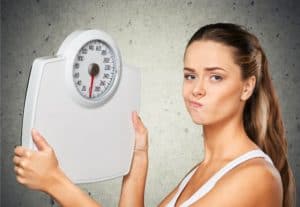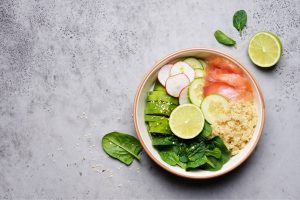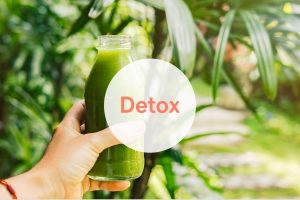What you’ve been programmed to believe about fitness can actually hurt you.

You want safe workouts with kick-ass results, right? It’s time to forget everything you’ve heard about exercise and finally get your facts straight. Here are the 10 most damaging fitness myths, debunked.
Myth #1: Exercise Erases Poor Eating Habits
This one is definitely a myth. Around 80 percent of what your body looks like is based on what you fuel it with. To create a calorie deficit, you must burn more calories than you consume. So even an hour-long sweat sesh won’t burn off a 1500-calorie meal from a fast food chain. The bottom line: You can’t out-exercise a crappy diet.
Myth #2: Lifting Weights Will Make You Bulky

Truth? Lifting weights increases lean muscle mass, which increases the number of calories you burn on a daily basis. By adding more lean muscle, you’ll burn more calories long after your workout is over, a phenomenon known as the afterburn effect. You could literally be chilling on the couch and you’ll still be burning more calories thanks to weight training.
In fact, research shows that women who lift a challenging weight for 8 reps burn nearly twice as many calories as women who do 15 reps with lighter weights.
Related: 5 Reasons Why Lifting Weights Won’t Make You Bulky
Myth #3: No Pain, No Gain
This common expression gets thrown around a lot but the truth is, it couldn’t be more wrong!
While a little discomfort is ok, you shouldn’t feel pain. Pain is your body’s warning sign that something is going wrong. And when you feel it, you should stop whatever you’re doing immediately.
Myth #4: You Can Spot Reduce Fat
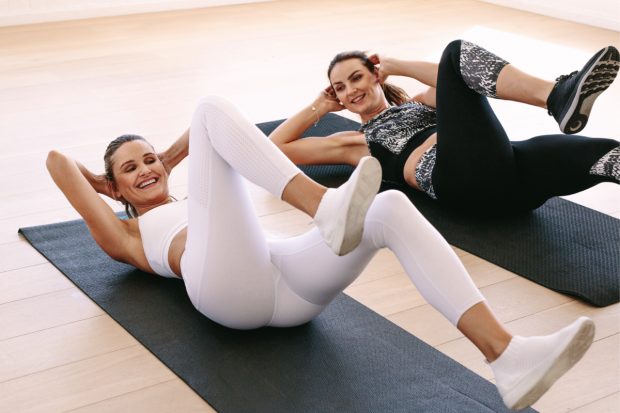
Sorry to disappoint, but spot reduction simply doesn’t work. So no matter how many crunches you do, you’ll never lose belly fat.
To lose fat, you’ll need to burn as much fuel as you can with intense full-body workouts that include compound exercises—exercises that work multiple muscle groups at the same time—like squats, lunges, mountain climbers, burpees and thrusters—while following a healthy diet.
One of the best ways to lose fat is through HIIT. Here’s why!
Myth #5: You’ll Burn More Fat on an Empty Stomach
If you train first thing in the morning, this statement is technically true. Why? In the morning, your body is deprived of nutrients so it will tap into fat stores.
But it will also burn more muscle, which defeats the purpose of fat loss. After all, the more muscle you have, the more fat you burn.
Plus, working out on an empty stomach doesn’t afford you the energy and power needed to crush a hard workout.
Myth #6: Only Eat Egg Whites
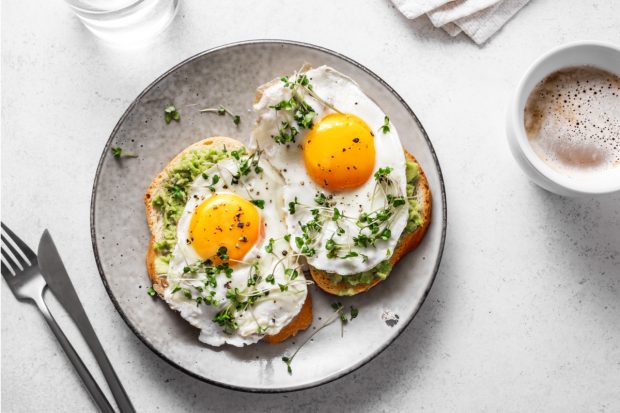
Egg yolks get a bad rap. We’ve all heard it before, “they’ll skyrocket your cholesterol levels.” It’s actually how they’re prepared and what they’re served with that’s the problem. Fried in butter and served with a side of sausage and bacon? Yep, that’s bad.
But you might be surprised that studies have found that the fat in egg yolks actually helps reduce LDL—the bad cholesterol. In fact, the yolk is where you get most of the vitamins and minerals from.
Not only that, eating an egg-white omelette contains hardly any fat (which is needed to curb your appetite), so your hunger cravings will most likely be through the roof by mid-morning.
Myth #7: Women Should Exercise Differently Than Men
The simple answer? There’s no sex-specific move! While men and women have different hormonal make-ups—which sometimes means a difference in muscular strength—it doesn’t mean they should train differently.
Men and women should both do full-body strength and cardio workouts that focus on all major muscle groups. The problem is, men tend to focus on chest, arm and ab workouts while women are drawn to leg and glute exercises. Unfortunately, they’re each forgetting the other half of their bodies, which may lead to imbalances.
Myth #8: Protein Bars Are Always a Healthy Choice
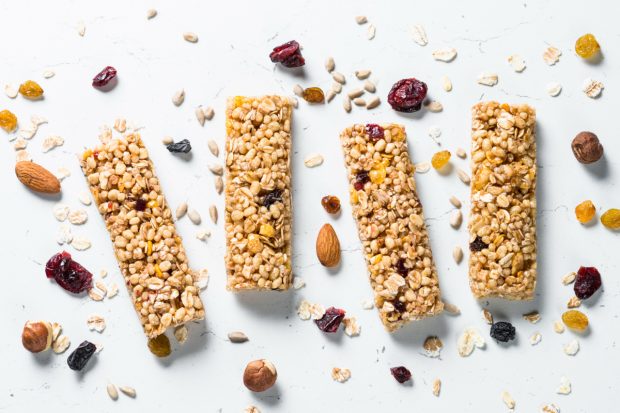
Not true! Many protein bars are highly processed and contain up to 30 grams of sugar—that’s more than the amount in a lot of candy bars! While you’re looking at the sugar count, also review the ingredient list. Some bars have only four to five ingredients, which is great. However, there are bars that contain over 50 ingredients, many of which you don’t recognize or can’t pronounce.
It doesn’t matter how many health benefits these bars may claim, if you see too many unfamiliar words on the ingredients list, place it back on the shelf.
Myth #9: Longer Workouts Are Better
The length of your workout doesn’t determine its effectiveness, but quality does! According to research, longer workouts (an hour or more) increase the production of cortisol, a catabolic hormone that destroys protein structures (muscle). And as you may know, the goal of any workout is to gain muscle.
While a higher percentage of fat is burned during longer workouts, it doesn’t equate to as much total fat burned during shorter, high-intensity workouts. This is because higher intensity workouts burn more total calories over the day due to the afterburn effect, which is one of the reasons HIIT has become so popular in the last few years. You literally get more bang for your buck in less time!
Myth #10: Carbs Make You Gain Weight
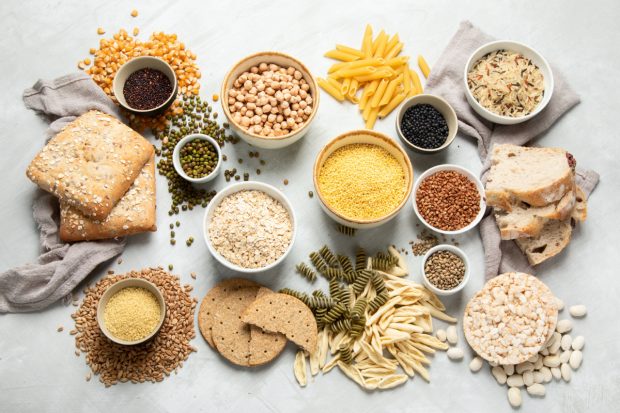
Carbs aren’t the enemy! In fact, they should be your highest nutrient intake per day since they’re the main source of energy and fuel that your brain uses to function properly.
It’s the type and quantity of carbs you eat—not carbohydrates themselves —that cause weight gain, so choose wisely. And while many claim carbs should be eliminated from your diet, they’re essential for well-balanced health.
Refined carbs are the problem and should only be eaten in moderation, especially since they’re high in sugar and have been stripped of their fiber, making glucose levels spike quickly. Examples include desserts, baked goods, white bread, rice and pasta and chips, crackers and pretzels.
On the other hand, complex carbohydrates—carbs that contain fiber—raise blood glucose levels more slowly and keep you fuller for longer periods of time. Examples include brown rice and pasta, fresh fruit and whole grains.
Bonus Myth: Muscle Turns to Fat When You Stop Training
Muscle and fat are two totally different tissues with different functions, so they will never convert to one another. Here’s what actually happens when you stop training. When you take a break from working out but continue to consume the same amount of calories, the excess fuel will head straight to your fat cells (not your muscle) for long-term storage.
Avoid common fitness myths that do nothing but impede your progress. Instead, work out safely and get kick-ass results with Gymondo. Start your free trial today.






